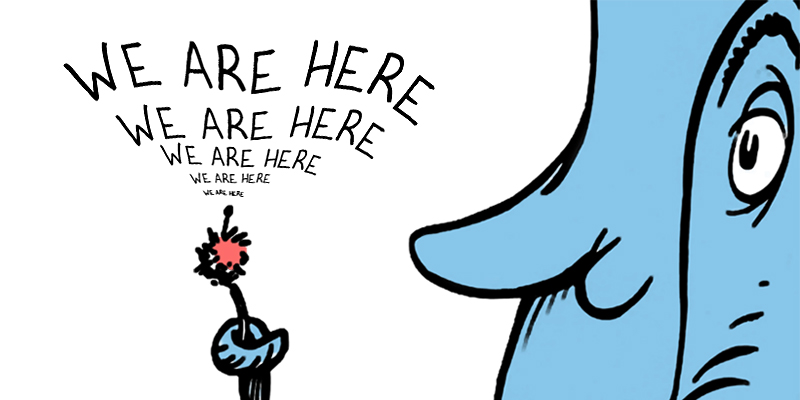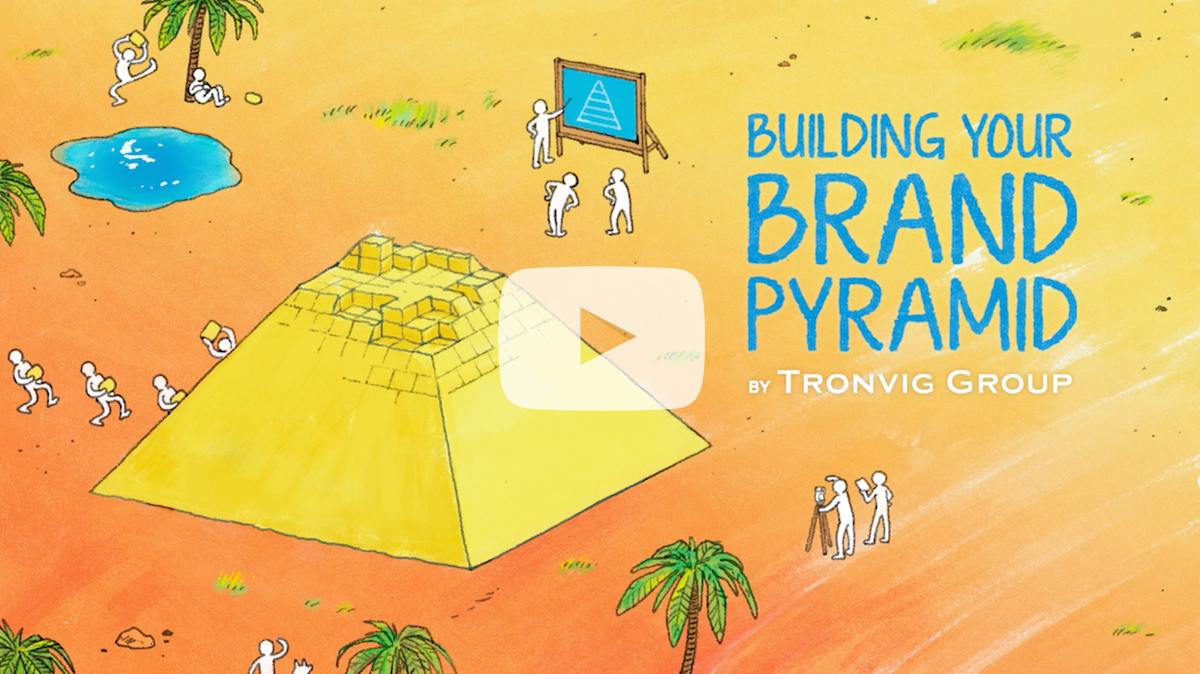Best-kept secret in town
It’s not uncommon for our clients to describe themselves as “the best-kept secret in town.” When they do so, an image from Dr. Seuss’s 1954 classic, Horton Hears a Who, comes to my mind. It’s the scene where every Who in Whoville makes noise in an effort to be heard out beyond their little puff of dust.
Being the best-kept secret in town is a symptom of a very common brand message and consistency problem.
Being the best-kept secret in town is a symptom of a very common brand message and consistency problem. One important part of the solution to this problem is what you might call the Whoville Requirement—that everyone deliver the same simple message. This is one of the cardinal rules of branding.
When your organization lacks a coherent Brand Idea to shape and guide its message, it will use different words and descriptions to communicate who you are, how you do what you do and why anyone should care. These diverse expressions of your brand are often only understandable to those who, like Horton, already know you, or those who are particularly sensitive to your brand for reasons more to do with them than with you.
Brand messaging needs to be tight and circumscribed. It is critical that everyone associated with your brand delivers the same consistent message in the present and over time. Brand reality is not so distant from the world of the Whos, all of whom must yell at the top of their lungs for an awfully long time before their message finally breaks out into the wider world. Without consistency and persistent effort, various independently concocted and expressed messages invariably fill in for the lack of a single script. All these variations of the message tend to ricochet around inside what you might call the brand bubble. Variety sounds good on the inside. It keeps things from getting boring. On the outside though, mixed messages get neutralized. It’s as if there were no message at all.
Only a simple, clearly distilled and incessantly repeated message will ever be strong enough to break free of the confines of internal meaning.
Only a simple, clearly distilled and incessantly repeated message will ever be strong enough to break free of the confines of internal meaning. Shorn of this support, the idea will never be able to coalesce into an expression or message strong or compact enough to achieve a velocity sufficient to escape from your brand bubble and be heard.
Think of the 1970 Chuck Jones animation of Horton Hears a Who. The little Whos are all shouting in seemingly endless repetition, “We’re here!” We’re here!”
How many times can you say the same thing?
More.
Many more.
More than you can stand.
And for more years than you thought possible.
Only then will that message be strong enough to penetrate the membrane that separates those inside your brand world from those outside of it. And it’s the outside ones that generally buy your stuff. If you are absolutely sick to death of your own brand, then you’ve probably had it long enough and used it consistently enough for it to begin to be recognized by people outside of your brand bubble. See the Whoville Requirement above.
How can you enforce this kind of draconian consistency other than by boiling offenders in a pot of Beezle-Nut oil?
The Brand Pyramid
The Brand Pyramid can be used as a benchmark to measure each and every idea and to test its alignment with your brand.
A Brand Pyramid can be a very useful and powerful tool. Essentially, it’s a tiered analytical diagram, hierarchically organized from surface to depth with the most important and hardest-to-distill stuff at the top. The Brand Pyramid can be used as a benchmark to measure each and every idea and to test its alignment with your brand.
Does this new idea align with the upper levels of the pyramid? Does it propel forward or encapsulate the majority of your core values?
No?
Then throw it out. Don’t do it. Sell it to someone else.
Our version of the Brand Pyramid has 5 rungs. Starting at the bottom, they are as follows:
1. What: What are your features and attributes? How are you defined in people’s minds?
2. How: How are your functional benefits delivered to your consumers? What special processes or competitive advantages do you take advantage of?
3. Why: Why do your brand consumers care about you? Why do you matter to them? What emotional benefits do they derive from your products or services?
4. Values: What does your brand value most? What values drive your decisions and underlie your brand personality?
5. And finally, and most importantly, at the top of the pyramid, the apex, the king, the One Ring to rule them all, the one thing that all the Whos in Whoville (even “a very small shirker named JoJo”) must yell at the top of their lungs:
And finally, and most importantly, at the top of the pyramid, the apex, the king, the One Ring to rule them all, the one thing that all the Whos in Whoville must yell …
The Brand Idea
If your Brand Idea is succinct, meaningful, and consistently and coherently expressed, it will be able to break free. It will be hearable outside of your brand bubble, outside of Whoville. That’s what we are after, folks.
“We are here!”
If you need help with that, you know who to call.
Is your Brand Idea audible? Build your own Brand Pyramid today.
Because we know that not everyone needs or can afford our full process, we created a guided tutorial package for our foundational brand strategy tool: the Brand Pyramid. Watch the video for a preview.
For more information on the brand strategy tutorial, visit here where you will find a fuller explanation and link to a free download of the first video.
Illustration by Anne Mieth based on the characters from Horton Hears a Who! by Dr. Seuss




Ask for help.
We are kind, thorough and ready when you are. You just need to ask.